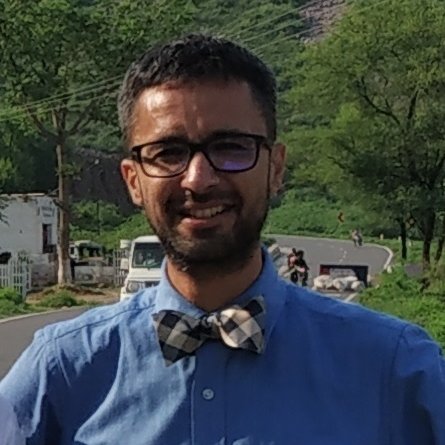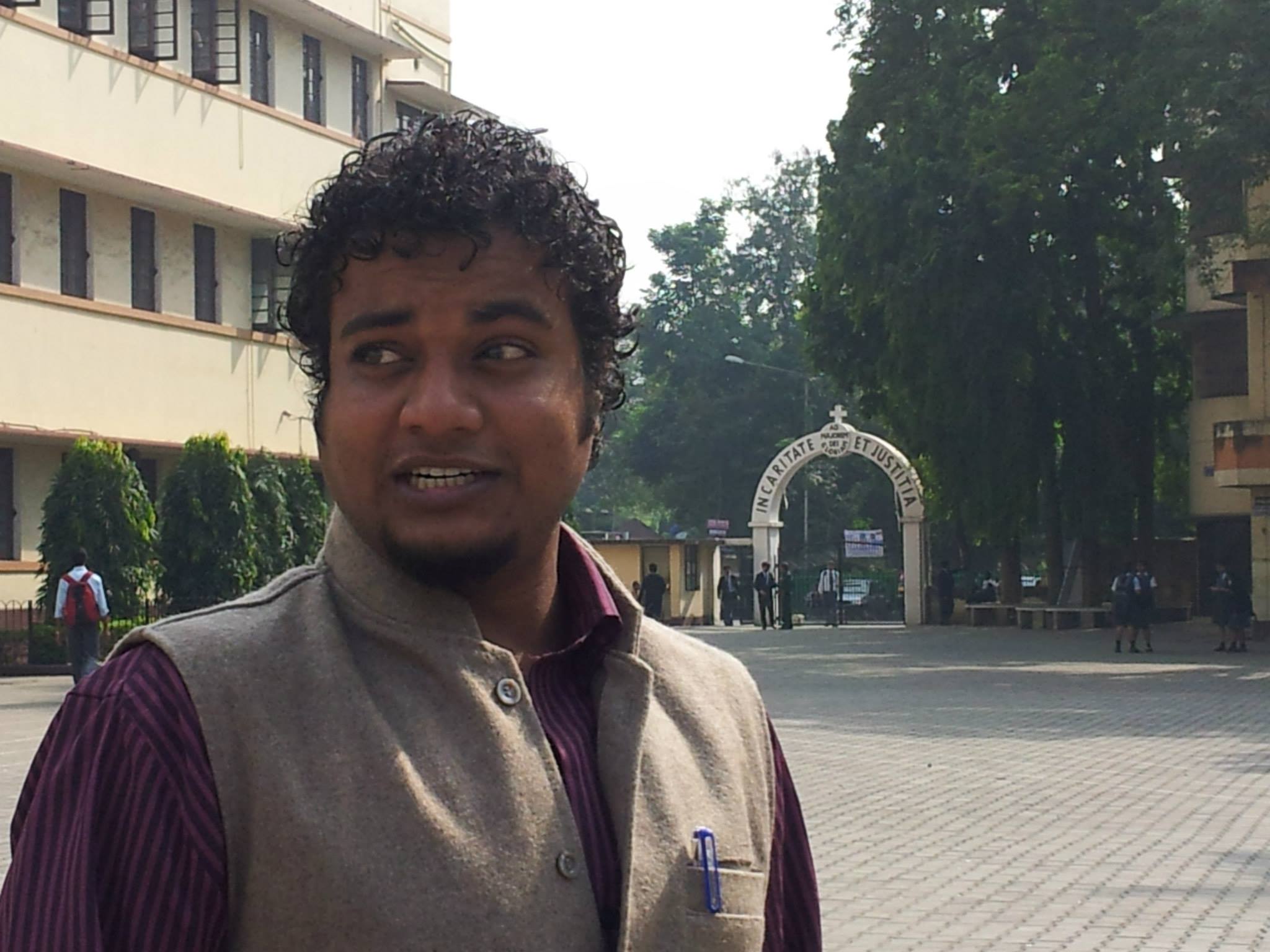MapSights
MapSights is a Decision Support System (DSS) for public health and pandemic management. It is one of a kind system which allows spatiotemporal visualization of on-ground operations on a webmap. It also allows users to draw data insights from current operations to identify challenges and to forecast impacts.
Aditya Sharma, Founder-CEO
- Respond (Decrease transmission & spread), such as: Optimal preventive interventions & uptake maximization, Cutting through “infodemic” & enabling better response, Data-driven learnings for increased efficacy of interventions
Data is the backbone for business processes across industries. Government programs were sluggish to change but have now realized its importance and within the past decade, have invested in data collection. However, complex utilization of the data for policy insights beyond simple derivations, is still lacking.
During CoVid pandemic, the speed and scale of implementation necessitated the application of technology and data processes. Government sought support from private sector for such expertise. We responded to this challenge, working on the niche segment of applying geospatial techniques to their datasets while developing systems for internal capacity building of the government, for future utilization as well.
While there's immense potential of deploying geospatial techniques for public health systems, doing it for govt systems has challenges since the data architecture is not designed with a foresight for final decision-making indicators.
- The data is often non-digitized and lack standardization.
- Absence of geo-coding & metadata protocols.
- Continuous time-series data not maintained.
- Data is heavily fragmented across departments and even separate ministries, based on their role in pandemic response.
- Lack of scientifically rigorous analysis on viable data.
Our work aims to address these institutional challenges in India.
In the pilot phase with state of Haryana, the solution directly served almost three hundred thousand state personnel, while also indirectly serving 27.5 million state residents through its resultant impact of improved health systems & governance delivery.
This solution served the state and COVID control team: -
- By giving a robust decision support to planners; with key data insights for disease tracking, infrastructure planning, vaccination rollout strategies, relief operations, mitigation strategies during public health emergencies including pandemics.
- In context of the pandemic, it can also identify incidence clusters and their transient nature (emerging, intensifying or diminishing)
- Also acts as information trove for epidemiological assessments, unearthing linkages between various attributes and the pandemic
After the first version of the application was developed, the CoVid situation evolved from tracking to treatment and the application was put on hold as the priority workflows changed. We are now repurposing the same for COVID vaccination operations as well.
We are engaged with state personnel, majority of whom have no background in tech or GIS, to understand their expectations. It shall eventually lead to a product that is intuitive and extremely user friendly, enabling people with varied tech capabilities to extract data insights from it.
- Pilot: A project, initiative, venture, or organisation deploying its research, product, service, or business/policy model in at least one context or community
- Artificial Intelligence / Machine Learning
- Big Data
- GIS and Geospatial Technology
- Software and Mobile Applications
- Creation of an omni-tool for data crunching in one of the biggest public health programs. It shall produce actionable intelligence that helps the planners, and also creates millions of beneficiaries through better public health delivery to this vast country.
- Opening up the market for GIS based tech in public sector applications in India.
- Increasing government capacity in managing GIS based tech and utilization of Decision support system tools for governance.
- Unlocking the hidden value of the underutilized public health data and data from other government programs.
- Developing an evidence based, data driven policy decision making culture for all processes in government workflows for on-ground operations
The impact is envisioned at multiple levels :
- Government stakeholders : A dynamic data feeding decision support system will help the govt take rapid decisions for on ground operations. This was well demonstrated during the CoVid-19 response where hotspots were identified rapidly based on the cases being reported in near real-time capabilities, and their status being daily updated on a severity index. This helped the planners adopt a graded response approach and prioritize areas that required needed immediate intervention.
- GIS tech industry : Adoption of GIS tech in public sector governance would open a new market for GIS tech with government as a major client. This would lead to a faster maturation of such tools and encourage many other companies to develop competencies in a space which is still niche.
- Citizens : Faster and more informed government decision making will be a positive and impactful change for the citizens.
One Year
- Implement a functional pilot product within the state of Haryana along with a frontline mobile app for field data capture.
- These efforts shall be combined with training and capacity building of the state teams that are tasked with the utilization and procurement of GIS based technology.
- Develop two use cases beyond public health in the state of Haryana. Potentially exploring opportunities to deploy fully functional products with the State Police and Environment department separately.
Three Years
- MapSights DSS for Public Health expanded to at least 5 other states in India.
- Mapsights DSS for Public Health scope of work to be expanded to include other health operations beyond CoVid-19. Eg: TB program, HIV program and the program for all immunizations under the national immunization program.
- Deploy at least three other use cases beyond health, in two new states.
- Generate relationships at the National Level to deploy at least one DSS solution for a National Program so that scalability is faster across states for the specific use-case.
- Govt departments adopt geospatial tech: Ensure adoption of GIS based tech by government departments. Also, make sure that they can value the utility of GIS applications, can identify use-cases independently, and can procure GIS applications with clear understanding of Service Level Agreements and quality of service.
- Government data becomes GIS ready: Ensure that all incident data is essentially geocoded. Also, ensure that all administrative boundaries and operational jurisdictions are digitized as shapefiles or in other formats, that can be directly used by GIS applications.
- An ecosystem develops around GIS based tech: More companies emerge in the field of geo spatial governance.
- Citizens are able to utilize public facing dashboards to view the operational aspects of GIS supported government programs.
- India
- India
- Financial – We are looking to raise capital to make our plans reach fruition. Since this is a novel product, most government stakeholders want to use the product for at least 6-8 months before implementing them within their workflows. This time is needed for them to develop a compelling need for using the software so that it can be budgeted for procurement. Thus, one needs to engage with government on a pro bono basis for this initial phase and funds are needed to sustain, until the point of purchase. We are trying to overcome the same by raising money from grants and bagging smaller GIS based consulting assignments with government.
- Product Development – Our product is a relatively new concept in public health space in Haryana and India and so we don’t have precedents to fall back on. We intend to handhold the government through trainings and workshops, while also allowing them to use the software first. We are also developing the workflows in collaboration with them so that they can have greater skin in the game. We will also help them to create quality metrics for procurement of GIS tech to speed up the process.
- For-profit, including B-Corp or similar models
- Department of Health, Government of Haryana
- Department of Police, Government of Haryana
- Chief Minister's Office, Government of Haryana
- Department of Environment, Chandigarh Administration
- Chandigarh Pollution Control Committee, Chandigarh Administration
- Patrick J McGovern Foundation
- Schmidt Futures
Through our initial work during CoVid-19 pandemic in 2020, subsequent recognition by state government and also at MIT Solve 2020, we've achieved sizeable momentum. However, this has also raised expectations and the pressures to deploy assets, as soon as possible. And this is where The Trinity Challenge helps us: -
- Scale up, put more boots on the ground and embed people within client teams. The funding will also allow us to support trials on a pro bono basis with the government, to eventually generate a compelling case of integration of GIS based DSS in their workflows and move towards revenue generation.
- Opportunity to partner multilateral organizations and agencies that can support us by giving us opportunities to deploy the product within their operations and also by mentoring us on related aspects. This also serves our long-term objective of stepping outside of B2G and looking at B2B model of co-developing public health solutions with development agencies and civil society organizations.
- We have benefitted immensely by being part of the MIT Solver 2020 cohort, with support from Patrick J McGovern Foundation. In our product development journey, more such opportunities allow us to grow further and make ourselves visible to potentially new partners.
- Bill and Melinda Gates Foundation - They have a strong presence in India and are actively working on improving the public health delivery in many states of India. Our product could be an enabler in BMGF's work while their on-ground presence in many Indian states such as Uttar Pradesh (largest by population) and Bihar, could give us an entry channel to at least demonstrate our product. Also, BMGF's presence in geographies outside India, could be a great opportunity for us to spread our wings and grow vertically.
- McKinsey & Company - They have partnerships for policymaking in public health space with federal and some of the state governments In India. This geospatial DSS and the whole philosophy of spatially locating public health data, could be a big paradigm shift in India's policymaking. Additionally, the platform can be a value proposition that they can forward sell to their own government consulting clients.
- University of Cambridge - It'll be a fantastic opportunity for us to collaborate with applied mathematics and public health experts from University of Cambridge.
- Johns Hopkins Bloomberg School of Public Health - A great chance for us to meet some of the leading minds working on Public Health.

Founder-Director
